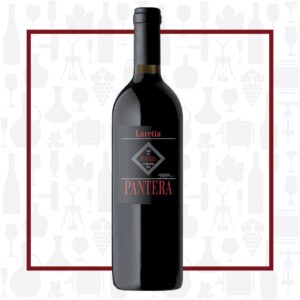Cellar Profile
In a tiny northern area of Emilia-Romagna, Italy, sandwiched between Piedmont and Tuscany, sits Piacenza. It was here that Felice Salamini decided to build a small vineyard to craft fine wines from autochthonous Malvasia, Barbera and Bonarda. It was here that Luretta was born! 30 years and untold successes later, Felice’s son Lucio has taken over at the helm and the property under vine has expanded to almost 50 hectares. The philosophy of the winery is simple: stress the vines, restrict yields, use organic and biodynamic principles and craft structured, elegant wines. To that end, there is no use of fertilizers or irrigation. The vines are purposely starved of nutrients and water, with severely restricted yields to thicken skins and long hang times to ensure full phenolic ripeness. Hand-harvested and meticulously sorted, Luretta uses only Allier French oak for aging and fermentation when wood is called for.
Region
The Colli Piacentini which give the DOC its title are the hills to the south of Piacenza, Emilia-Romagna’s most westerly city. These are the foothills of the northern Apennines, which run northwest to southeast through Emilia-Romagna, providing a patchwork of terroirs among their peaks and valleys. Many of the vineyards of the Colli Piacentini are planted on the rolling hills leading up to the northern slopes of the Apennine Mountains. The vineyard soils are composed of a mix of clay, marl, sand and sandstone from the Pliocene epoch.
Vineyard
The Barbera and Bonarda grown in the Luretta vineyards on single-spurred cordon are organically cultivated under a dry farming practice. Keeping the vines under hydric stress forces the plants to reduce the amount of water in the berries, reduce pulp and thicken the skins. This keeps the berries small and flavours intense. The old vine Cabernet Sauvignon comes from these same vineyards, but it has careful canopy management to help attain full ripeness and to avoid overly herbaceous notes.
Varieties
Bonarda is a red wine grape variety found in several areas of central northern Italy, namely eastern Piedmont, southern Lombardy and western Emilia-Romagna. It is sometimes known by its synonym Croatina, a nickname it shares with Uva Rara and Bonarda Piedmontese, a near-extinct aromatic variety from the hills of Piedmont. Bonarda has characteristics similar to the Dolcetto grape in that it tends to produce fruity, deeply-coloured wines that are mildly tannic and can benefit from bottle aging. Cabernet Sauvignon, a Bordeaux variety, is grown widely around the world, where it produces deeply-coloured, rich and expressive wines with tannic structure. It has become much more popular in Northern Italy in recent years, where it is frequently blended with indigenous varietals.
Winemaking
Grapes are hand-harvested and then fermented separately on their indigenous yeasts over 20 days, with regular manual punchdowns on the cap. After blending, the wine spends next 9 months in French oak barriques, 50% new, before being bottled, unfined and unfiltered.
Tasting Notes
Dark red, with purple flecks and almost opaque in the glass. Aromas of black cherry, pipe tobacco, baking spice and black plum. On the palate, this big-bodied red has a generous helping of red and black berry notes, with some earthy notes, coffee and a touch of mocha. There are plenty of tannins here, but they are silky and add more texture than bite. Some back end sour/tart hints and ample acidity keep it from being too heavy-handed – this gem is about balance. Pair with a great steak.

 info@buyersandcellars.ca
www.buyersandcellars.ca
info@buyersandcellars.ca
www.buyersandcellars.ca